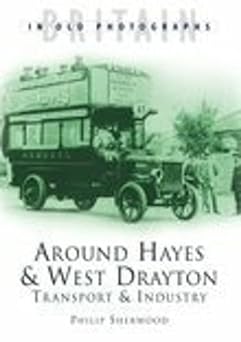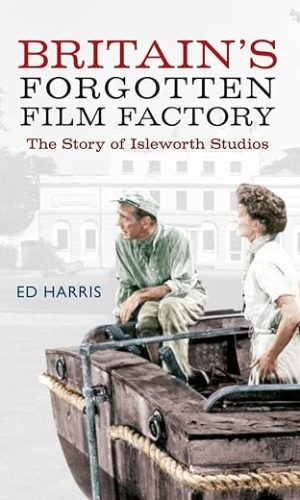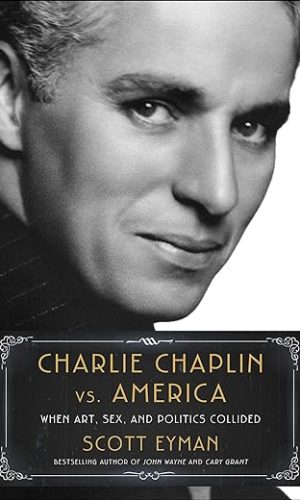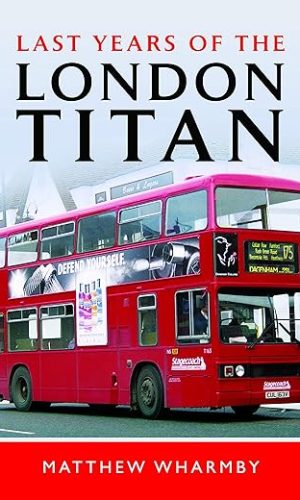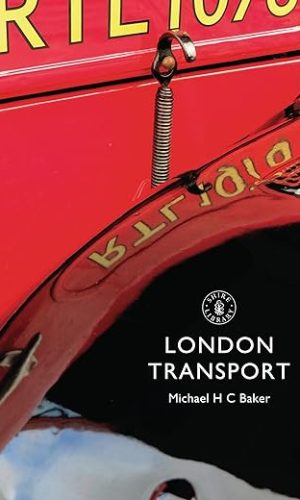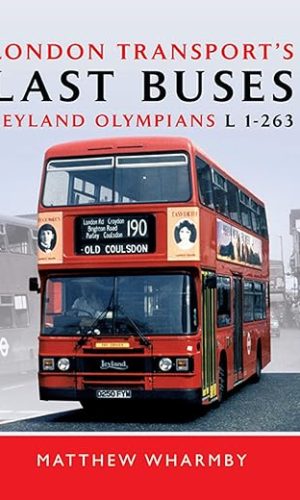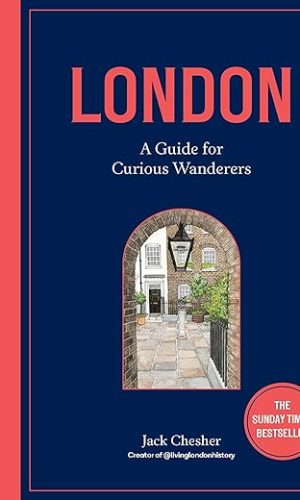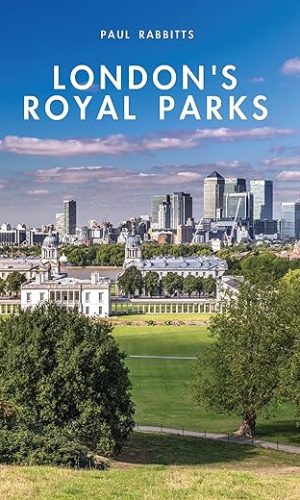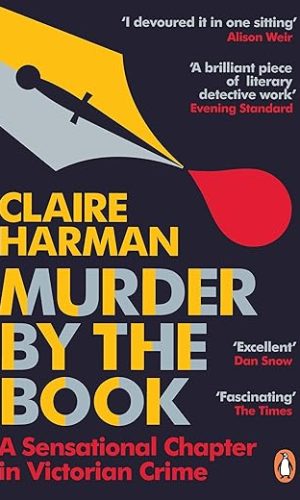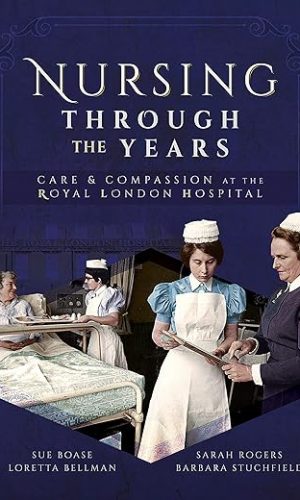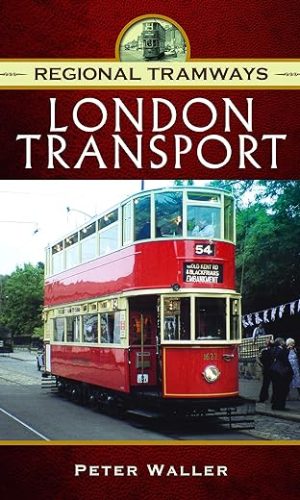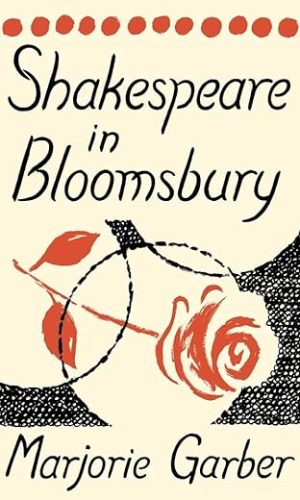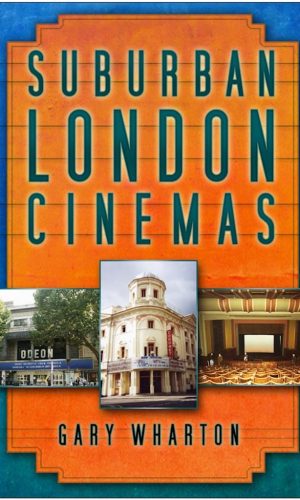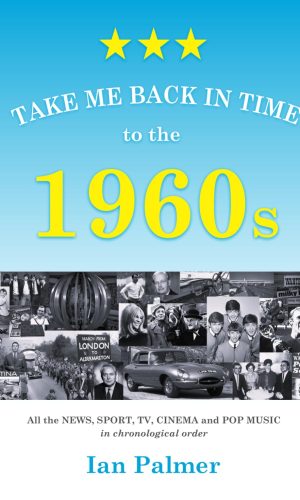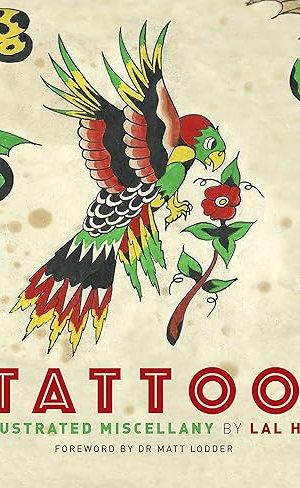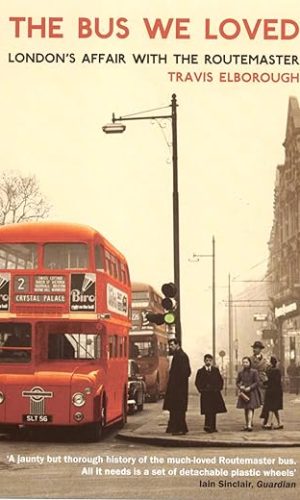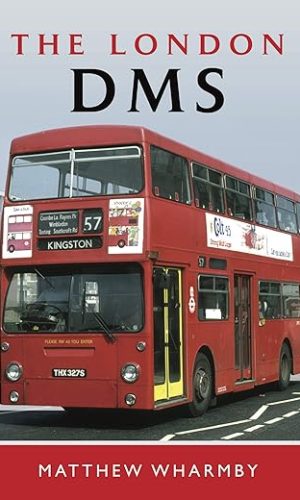Local & Urban
-
Around Hayes & West Drayton: Transport & Industry (Britain in Old Photographs)
Philip Sherwood’s collection of old photographs covers the development of transport and industry in an area that is now dominated by Heathrow Airport. This book explores the relationship between industrial development and transportation, and how these two themes have shaped Hayes and West Drayton.Read more
£9.40£12.30 -
Britain’s Forgotten Film Factory: The Story of Isleworth Studios
The story of Isleworth Studios is essentially that of the British film industry from 1914 to 1952. Beginning with the first British Sherlock Holmes screen adaptation and ending with its Oscar-winning swansong, The African Queen, in the intervening years it was one of the most technically advanced studios in the country and home to some of the best and the worst examples of British cinema. It experienced the transition from silent films to talkies. Britain’s only movie mogul, Alexander Korda, arrived, looking to rival Hollywood, followed by Douglas Fairbanks Jr looking to rival Korda. Buster Keaton struggled with alcoholism; Richard Burton made his screen debut; Bogart, Hepburn and Huston made a classic; and Emeric Pressburger directed his first and only film at Isleworth. Little by little the old dream factory’s physical shape is now crumbling or altered, or is disappearing altogether. Soon it may be gone. Isleworth Studios has a history worthy of more than just an addendum in the annals of the British film industry. This is its story told for the very first time.Read more
£8.60£9.50 -
Charlie Chaplin vs. America: When Art, Sex, and Politics Collided
The remarkable, must-read story of Charlie Chaplin’s years of exile from the United States during the postwar Red Scare, and how it ruined his film career, from bestselling biographer Scott Eyman.Bestselling Hollywood biographer and film historian Scott Eyman tells the story of Charlie Chaplin’s fall from grace. In the aftermath of World War Two, Chaplin was criticized for being politically liberal and internationalist in outlook. He had never become a US citizen, something that would be held against him as xenophobia set in when the postwar Red Scare took hold.
Politics aside, Chaplin had another problem: his sexual interest in young women. He had been married three times and had had numerous affairs. In the 1940s, he was the subject of a paternity suit, which he lost, despite blood tests that proved he was not the father. His sexuality became a convenient way for those who opposed his politics to condemn him. Refused permission to return to the US from a trip abroad, he settled in Switzerland, and made his last two films in London
In Charlie Chaplin vs. America, bestselling author Scott Eyman explores the life and times of the movie genius who brought us such masterpieces as City Lights and Modern Times. This is a perceptive, insightful portrait of Chaplin and of an America consumed by political turmoil.
Read more
£16.20£18.00 -
Death, Disease & Dissection: The Life of a Surgeon-Apothecary 1750–1850
“A deep dive into the education and lives of a medical professional’s life over the span of 100 years . . . A good addition to any medical historian’s library” (The Lazy Historian).
Imagine performing surgery on a patient without anesthetic or administering medicine that could kill or cure. Welcome to the world of the surgeon-apothecary.
During the eighteenth and nineteenth centuries, significant changes occurred in medicine. New treatments were developed and medical training improved. Yet, with doctors’ fees out of the reach of ordinary people, most relied on the advice of their local apothecary, among them, the poet John Keats, who worked at Guy’s Hospital in London. These men were the general practitioners of their time, making up pills and potions for everything from toothache to childbirth.
Death, Disease & Dissection examines the vital role these men played within their communities, their training, the treatments they offered, the quacks, and the shocking sights and sounds in hospitals and operating theaters of the time. Suzie Grogan transports readers through 100 years of medical history, exploring the impact of illness and death and bringing the experiences of the surgeon-apothecary vividly to life.
“I think the author has done a wonderful job of researching the topic and presenting the history of the profession, and biographical information on some of the most influential Surgeon-Apothecaries of the period. . . . This book is well organized and full of fascinating information on the topic.” —A Line from a BookRead more
£3.80 -
Isle of Dogs: A canine adventure through Britain
Every dog must have his day.
Dogs are never just pets. Not for the British. We love them as members of the family. They work with us, sleep with us, eat with us, help us live our daily lives and come on holiday with us. Some parents will freely admit to enjoying the company of their dogs more than their children while many couples would choose the dog over their partner. So what is it that makes our bond so special?
In this fascinating adventure across Britain, Clare Balding explores the many roles dogs fulfil and the history of how they became such an intrinsic part of our lives. She talks to people whose everyday survival depends on their dog, those whose experience of life has been transformed by them and what dogs have meant to her.
From the mysteries of extinct breeds to the ancient dogs still thriving today, she journeys from Battersea to the Orkney Islands via Buckingham Palace to tell a moving and humorous tale of loyalty and partnership. Isle of Dogs is an unmissable read for anyone whose life has been transformed by a faithful hound.
Read more
£10.50£20.90Isle of Dogs: A canine adventure through Britain
£10.50£20.90 -
Last Years of the London Titan
Already depleted by withdrawals in the London Buses Ltd era, the Leyland Titan fleet of T class was divided upon privatisation between three new companies; London Central, Stagecoach East London and Stagecoach Selkent. Together with a host of smaller companies operating second-hand acquisitions, the Titans’ declining years between 1998 and 2003 are explored in this pictorial account that encompasses both standard day-to-day routes, emergency deployments and rail replacement services. Only small numbers remained to usher out the type altogether at the end of 2005, when step-entrance double-deckers as a whole were banished from the capital.Read more
£7.30£23.80Last Years of the London Titan
£7.30£23.80 -
Liberty: The History – Luxury Edition: Treasure from the archives of the London department store
Liberty is the last word in bohemian luxury, a destination and brand celebrated for its unique blend of avant-garde design and expert craftsmanship.
Liberty: The History celebrates the historic beginnings of the iconic store as well as their contemporary vision – from their ‘Eastern Bazaar’ of objets d’art, rugs and textiles from Japan and the East to the brand’s association with the developing Art Nouveau movement, their whimsical window displays and quintessential Art Fabrics, to the innovations in design and printmaking and the savvy collaborations and creative direction that have kept Liberty at the forefront of the fashion world.
With treasures from the Liberty archives including classic silk scarves, designs spanning over a century and original sketches for Liberty Art Fabrics, this is the official invitation into a London institution and a global icon.
This deluxe edition features a cloth-bound hardback book, 10 exquisite art prints and a stunning collectible gift box.
Read more
£32.10£47.50 -
London Transport: 799 (Shire Library)
London Transport was created in 1933 to coordinate the shambolic, overlapping transport systems of the capital, and for decades has striven to meet the challenges of organising London travel. Now operating as Transport for London (TfL), it continues this demanding work. In this fully illustrated volume, Michael H. C. Baker presents the complete story of the organisation from its origins, through the upheavals of the Second World War, to TfL’s biggest modern project – Crossrail. Covering modes of transport including trams, trolleybuses, the iconic RT and Routemaster buses and the trains of the Underground, this is an essential guide to London’s world-famous transport operator.Read more
£8.50 -
London Transport’s Last Buses: Leyland Olympian L1-263
The Olympian was Leyland’s answer to the competition that was threatening to take custom away from its second-generation OMO double-deck products. Simpler than the London Transportcentric Titan but, unlike that integral model, able to respond to the market by being offered as a chassis for bodying by the bodybuilder of the customer’s choice, the Olympian was an immediate success and soon replaced both the Atlantean and Bristol VRT as the standard double-decker of the NBC. It wasn’t until 1984 that London Transport itself dabbled with the model, taking three for evaluation alongside trios of contemporary double-deckers.The resulting L class spawned an order for 260 more in 1986, featuring accessibility advancements developed by LT in concert with the Ogle design consultancy, but the rapid changes engulfing the organisation meant that no more were ordered. During the 1990s company ownerships shifted repeatedly as the ethos of competition gave way to the cold reality of big business, an unstable situation which even saw London’s bus operations broken up.The L class was split between three new companies, but the backlog of older vehicles to replace once corporate interests released funding ensured the buses up to a further decade in service. Finally, as low-floor buses swept into the capital at the turn of the century, Olympian operation at last declined, and the final examples operated early in 2006.This profusely illustrated book describes the diversity of liveries, ownerships and deployments that characterised the London Leyland Olympians’ two decades of service.Read more
£9.50 -
London: A Guide for Curious Wanderers: THE SUNDAY TIMES BESTSELLER
See London in a completely new light in this guide to the city’s hidden secrets, untold stories and special places laden with history which you can discover for yourself!
London is famous for its museums, each one full of treasures and relics – but the biggest museum in the capital is the city itself. From the stories behind unusual street names, to the trees in our parks; railings made from recycled WWII stretchers, to shrapnel damage on walls; the hidden symbols on post boxes, to prehistoric tree trunks – there is a rich history hidden in the oft-overlooked details of the city’s streets, gardens, parks and buildings.
This richly detailed and beautifully illustrated book provides a miscellany of historic features and curiosities to spot as you wander around the capital. Whether you’ve always wondered why there are cattle troughs on your route to work, why bollards often look like upside down cannons or wanted to know what a Victorian stink pipe is – this book will provide the tools to decipher London’s secret code, and introduce you to a treasure trove of hidden spots to explore.
The book comes complete with maps so you can spot these details yourself on walks through the capital.
So, pop on a sturdy pair of shoes and get ready to turn the city into the museum you never knew you had.
Read more
£11.70£14.20 -
London’s Royal Parks: 793 (Shire Library)
London’s royal parks are among its most beautiful and beloved spaces: just as much as the Houses of Parliament, Buckingham Palace or St Pancras Station, the mere mention of Hyde or Regent’s Park is enough to evoke the capital in all its glory for residents and tourists alike. They have a grand history – some were royally owned as far back as the Norman conquest, others were acquired by Henry VIII during the Reformation – and since being opened to the public during the eighteenth century, they have hosted some of London’s great events, including the Great Exhibition and innumerable jubilees and celebrations. This book tells the story of all eight of the parks from the point when they were acquired by the monarchy until the present day, including the major historic moments and events with which they are associated.Read more
£9.20£9.50London’s Royal Parks: 793 (Shire Library)
£9.20£9.50 -
Murder by the Book: A Sensational Chapter in Victorian Crime
*Shortlisted for the CWA Gold Dagger for Non-Fiction 2019*
‘A fascinating portrait of Victorian London’ Observer
‘I devoured it in one sitting’ Alison Weir
‘Excellent’ Dan Snow
Early on the morning of 6 May 1840, on an ultra-respectable Mayfair street, the elderly Lord William Russell was discovered in bed with his throat cut so deeply that the head was almost severed.
When Lord William’s assassin claimed to having been inspired by a recent sensational novel, it sent shock waves through literary London, and drew both Dickens and Thackeray into the fray. The crime, the investigation, the city’s fevered fixation and the mores of the Victorian age are all brilliantly evoked and scrutinized in Claire Harman’s spellbinding account of a surprisingly literary crime.
‘A scandalous Victorian mystery’ Guardian
‘Fascinating, entertaining. Harman’s tale is never less than rip-roaring’ Daily Telegraph
‘Vivid and punchy’ Spectator
Read more
£0.90 -
Nursing Through the Years: Care and Compassion at the Royal London Hospital
Nursing has always been a challenging but rewarding profession. As part of the core healthcare team, nurses take responsibility for the care they provide to patients, displaying both compassion and discipline in their daily work. Demanding professions require rigorous training, and nursing is no exception. As the real story to Call the Midwife , Nursing Through the Years is a unique book that spans eight decades to reveal the fascinating lives of nurses who trained and worked at The Royal London Hospital, serving the community of the East End of London. Having interviewed over 85 nurses, whose experiences span from the 1940s to the 2000s, this important account captures the memories of their time at The Royal London. Exploring each decade, the extent to which nursing has developed and changed, and the highs and lows of training to be a nurse in a renowned teaching hospital are recalled in detail. It is a treasure chest of recollections which are informative, entertaining, inspiring, enlightening and also controversial, often challenging the myths and misconceptions that continue to surround nursing today.Read more
£16.10 -
Regional Tramways – London Transport
The final volume in the Regional Tramways’ series focuses on the history of tram operation in the London area. Starting the story with the pioneering horse tramways operated by George Francis Train in the 1860s, the book narrates how the various horse, steam, cable and electric tramways evolved in the period leading up to the creation of the London Passenger Transport Board in 1933. The primary focus of the book is the period immediately after World War 2 when, following the retention of the tramways for longer than anticipated, the process of conversion – codenamed Operation Tramaway’ – saw almost 1,000 trams eliminated from the streets of London in less than two years. Also covered in the book are the two second-generation tramways – the Docklands Light Railway and Croydon Tramlink – which now serve parts of the Greater London area. The book concludes with an overview of those London trams that survive into preservation.Read more
£10.30£19.00Regional Tramways – London Transport
£10.30£19.00 -
Shakespeare in Bloomsbury
The untold story of Shakespeare’s profound influence on Virginia Woolf and the rest of the Bloomsbury Group
“A spirited dance of minds.”―Chris Vognar, Boston Globe
For the men and women of the Bloomsbury Group, Shakespeare was a constant presence and a creative benchmark. Not only the works they intended for publication―the novels, biographies, economic and political writings, stage designs and reviews―but also their diaries and correspondence, their gossip and small talk turned regularly on Shakespeare. They read his plays for pleasure in the evenings, and on sunny summer afternoons in the country. They went to the theater, discussed performances, and speculated about Shakespeare’s mind. As poet, as dramatist, as model and icon, as elusive “life,” Shakespeare haunted their imaginations and made his way, through phrase, allusion, and oblique reference, into their own lives and art.
This is a book about Shakespeare in Bloomsbury―about the role Shakespeare played in the lives of a charismatic and influential cast, including Virginia and Leonard Woolf, Vanessa Bell, Clive Bell, Roger Fry, Duncan Grant, Lytton Strachey, John Maynard Keynes and Lydia Lopokova Keynes, Desmond and Molly MacCarthy, and James and Alix Strachey. All are brought to sparkling life in Marjorie Garber’s intimate account of how Shakespeare provided them with a common language, a set of reference points, and a model for what they did not hesitate to call genius. Among these brilliant friends, Garber shows, Shakespeare was in effect another, if less fully acknowledged, member of the Bloomsbury Group.Read more
£19.00£23.80Shakespeare in Bloomsbury
£19.00£23.80 -
Suburban London Cinemas
Among the 50 historic cinemas featured are the Finsbury Park Astoria, the Maida Vale Picture House, the Shepherds Bush Pavilion, the West Ealing Kinema, the Woolwich Granada and Kilburn’s Gaumont State. Illustrated with 100 images, this well-researched and informative volume will delight all those who have fond memories of visiting some of London’s long-since vanished cinemas, as well as those that still remain in some form or another.
Read more
£9.50£15.20Suburban London Cinemas
£9.50£15.20 -
Take Me Back in Time to the 1960s: All the NEWS, SPORT, TV, CINEMA and POP MUSIC in chronological order (England’s past decades – all the news, sports and pop-culture in…
Travel Back in Time to the Swinging 1960s.
A comprehensive timeline of popular culture, news events, politics, football, television, cinema, fashion and pop music from England in the 1960s. This unique publication contains 270 pages of memories and nostalgia for people that lived in England between 1960 and 1969. From the days of Harold Macmillan, Bobby Charlton, Cliff Richard, black and white television, Hercules racing bicycles and Triumph Herald motorcars; through to the times of Harold Wilson, Georgie Best, the Rolling Stones, colour telly, Raleigh Choppers and Ford Capris, this book recaptures thousands of events, sights and sounds of everday life in the 60s. Read, enjoy and travel back in time to the decade of peace, love, victory in the football world cup, Z cars and The Beatles..Read more
£11.40 -
Tattoo: An Illustrated Miscellany
‘Beautiful, inspiring and informative’ – Bidisha
London tattoo legend Lal Hardy reveals the fascinating hidden world of tattoo, past and present.
With a wealth of previously unpublished photographs, details and anecdotes, Tattoo preserves many unique and valuable items of tattoo culture, including:
· Historical stencils and flash
· Customised machines, traditional hand-tools and animal-marking equipment
· Collector’s cards, bubblegum cards and transfers
· Memorabilia and tributes relating to tattoo legends such as George Burchett and The Great Omi
· Postcards, toys, ornaments, T-shirts and other merchandise
· Supply catalogues, magazines, books and art
· Rare ephemera – awards, badges, business cards, convention passes, postage stamps and hand-drawn signsLAL HARDY was born in London in 1958. He opened New Wave Tattoo in north London’s Muswell Hill when he was just twenty-one years old. Lal is part of an international community of highly respected tattoo artists. This is his sixth book.
MATT LODDER is an expert on body art and body modification. He is the author of Tattoo: An Art History and is Director of American Studies at the University of Essex.
Read more
£3.80 -
The Bus We Loved: London’s Affair With The Routemaster
In December 2005, London lost one its most famous symbols: the Routemaster bus – a bus designed and made in London, by Londoners for Londoners, which was to London what the gondola is to Venice. In terms of postcards, books, films and cheap souvenirs, and in the eyes of the world, the Routemaster represented the city just as much as Big Ben. It was the last bus to be have conductors as well as drivers, the last bus to ring familiar shouts that are at least a century old: ‘Fares please,’ ‘Full up inside but room on top,’ ‘Next stop the British Museum’! The last bus, in other words, to be a proper bus. In this fond history, Travis Elborough tells the story of the Routemaster’s invention, rise and decline, of the people who worked on it and of the enthusiasts who were mad about it. The streets will never be the same again.Read more
£6.50£7.60 -
The London DMS
Vilified as the great failure of all London Transport bus classes, the DMS family of Daimler Fleetline was more like an unlucky victim of straitened times. Desperate to match staff shortages with falling demand for its services during the late 1960s, London Transport was just one organization to see nationwide possibilities and savings in legislation that was about to permit double-deck one-man-operation and partially fund purpose-built vehicles. However, prohibited by circumstances from developing its own rear-engined Routemaster (FRM) concept, LT instituted comparative trials between contemporary Leyland Atlanteans and Daimler Fleetlines.The latter came out on top, and massive orders followed. The first DMSs entering service on 2 January 1971.In service, however, problems quickly manifested. Sophisticated safety features served only to burn out gearboxes and gulp fuel. The passengers, meanwhile, did not appreciate being funnelled through the DMS’s recalcitrant automatic fare-collection machinery only to have to stand for lack of seating. Boarding speeds thus slowed to a crawl, to the extent that the savings made by laying off conductors had to be negated by adding more DMSs to converted routes!Second thoughts caused the ongoing order to be amended to include crew-operated Fleetlines (DMs), noise concerns prompted the development of the B20 quiet bus variety, and brave attempts were made to fit the buses into the time-honored system of overhauling at Aldenham Works, but finally the problems proved too much. After enormous expenditure, the first DMSs began to be withdrawn before the final RTs came out of service, and between 1979 and 1983 all but the B20s were sold as is widely known, the DMSs proved perfectly adequate with provincial operators once their London features had been removed.OPO was to become fashionable again in the 1980s as the politicians turned on London Transport itself, breaking it into pieces in order to sell it off. Not only did the B20 DMSs survive to something approaching a normal lifespan, but the new cheap operators awakening with the onset of tendering made use of the type to undercut LT, and it was not until 1993 that the last DMS operated.Read more
£9.50The London DMS
£9.50 -
The Victorians
People, not abstract ideas, make history, and nowhere is this more revealed than in A. N. Wilson’s superb portrait of the Victorians, in which hundreds of different lives have been pieced together to tell a story – one which is still unfinished in our own day. The ‘global village’ is a Victorian village and many of the ideas we take for granted, for good or ill, originated with these extraordinary, self-confident people. What really animated their spirit, and how did they remake the world in their view? In an entertaining and often dramatic narrative, A. N. Wilson shows us remarkable people in the very act of creating the Victorian age.Read more
£7.60The Victorians
£7.60 -
Why Do Shepherds Need a Bush?: London’s Underground History of Tube Station Names
Who travelling through Totteridge and Whetstone is aware that the station got its name from the medieval soldiers who sharpened their swords at the whetstone before the bloody Battle of Barnet? Or that Canary Wharf was built for importing fruit from the Canary Islands? Or that Shepherd’s Bush was previously known as Gagglegoose Green? The names of the 300 or so underground stations are part of everyday life for Londoners, but we hardly ever question their meanings or history. This entertaining book delves into their origins, ensuring you never view your journey beneath the city in the same way again.
Read more
£7.30£8.50

